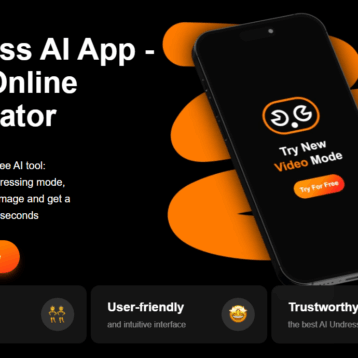Choosing the right software model can determine whether your business isn’t the future. Regardless of whether you are choosing SaaS or On-Premise, this choice makes all the difference whether you are going to grow, manage data, or change. An ideal model not only makes your process efficient but also helps you get geared for growth without the added complexities. To make informed decisions, it’s important to grasp what makes each model tick, its strengths, and what weaknesses it has to avoid. This will be the first step toward creating a solid foundation for uninterrupted success.
Understanding SaaS: Benefits, Costs, and Challenges

Software as a Service (SaaS) is a form of service whereby Software is made available through the Internet through a subscription. It provides the major advantage in terms of the flexibility and ease of use of this model. Updates happen automatically and teams can connect from virtually any location, which can alleviate the need for in house IT resources. Therefore, SaaS becomes very popular among businesses hoping to cleverly grow without the hassle of running their own servers.
At the end of the day, while SaaS can reduce the initial setup and hardware, there are still subscription fees to crunch. Depending on the size of the team or the need to use this for a long period, it could also be more expensive overall than a Premise option. Another is data security. SaaS data is stored outside the business, so companies dealing with sensitive information such as financial and healthcare data may also require extra safeguards. Partnering with a custom software development company can help tailor these security features and make sure they align with industry standards and compliance needs.
SaaS is a great fit for most businesses that need a tool that is easy to scale and doesn’t have zero setup costs. However, it requires some understanding of what it truly costs and how it handles data if you plan to continue to scale.
Exploring On-Premise Solutions: Benefits, Costs, and Limitations
One of this model’s traits is that Premise Software runs on your servers, truly in your hands for customizing your data, infrastructure, and various other needs. It’s an appealing approach for companies that must exert complete control over delicate data or have strict regulatory requirements. When you own the Software and the servers it runs on, data access, storage, and security are also handled within your own walls in industries such as finance or healthcare, and it just makes things a bit more reliable.
On-premise solutions can be expensive, starting with the Software and hardware purchase and the installation cost. It requires some dedicated IT team to be able to update, resolve undefined problems and ensure security. While these are more expensive up front, they potentially provide low cost long term savings by not having subscription fees. While On-Premise Software is less flexible for remote access, teams depending on mobility may have to compromise.
Key Factors to Consider When Choosing Between SaaS and On-Premise
The choice between SaaS and On-Premise Software requires you to consider a number of parts to determine which is ideal for your business. Take your budget, cost structure in mind, first. This means that SaaS initially carries a lower upfront cost, but then has a subscription, adding up over time. For example, where On-Premise may require a higher initial investment, the fixed costs associated with that often translate into more economical costs in the long run.
Another very important factor is security. SaaS, on the other hand, puts the burden of data management in the hands of an external provider, which is good for companies that value ease over who is handling the data. However, businesses that handle sensitive or regulated information tend to prefer the security of On-Premise, where it is under their control as far as how data is handled. Lastly, consider flexibility. Remote access is built into SaaS, so it’s great if you have teams that need to be mobile; OnPremise might be more appropriate in companies that have stable, physically centralized workforces.
Industry-Specific Preferences: Which Model Works Best in Different Sectors
Most industries are clear about what software model they prefer. On Premise solutions are favorite for fields like the health care and finance because of the provision of control over sensitive data and the strict compliance with the regulations. This is good news for organizations that need to protect a huge amount of private data every day, as it means they will have their data stored in house and are then able to tailor their security to their needs perfectly.
On the other hand, SaaS is often chosen for industries that are geared towards scalability and remote access, with tech startups and retailers being the most prominent examples. It is perfect for fast-flipping environments, as this model allows businesses to grow, expand, and adapt without needing a large infrastructure. They’ll help you make a choice that supports both the industry demands and company direction, linking software choices to lasting success.
Transitioning from One Model to Another: What Businesses Should Know
When you switch from a SaaS to a Premise app, you’ll have to be extremely cautious about what you’re supposed to use, what you should not use, and what the potential issues are with either choice of model. When working with businesses that want to move from On-Premise to SaaS, normally, data is moved from an existing system to a cloud-based system, which is often done in a secure way. In the case of this shift, there is more flexibility and confidence in the selected provider’s security practices and the reliability of the internet connection.
When moving from SaaS to On-Premise, you’ll have to spend money on infrastructure and educate your staff on service storage and Software maintenance, as these actions will now be done internally. Often, this option allows you more control over data, which is important for companies in very regulated industries. Whatever direction a business chooses to go, knowing how your business will be financially and logistically impacted by a transition will ensure that a change in model really addresses long-term needs.
Making the Final Decision: A Checklist for Choosing the Best Model
When finalizing your choice, use a checklist to evaluate which model best aligns with your business needs:
- Assess Security Needs and Compliance Requirements: Check that your industry is heavily regulated and find the model that meets your data security requirements. On the flip side, On-Premise may offer a better security shield in case SaaS providers don’t tend to cater to all your security needs.
- Evaluate Long-Term Costs and Budget: Determine how the initial setup costs, the cost of ongoing maintenance, and the potential of scale compare. Small to mid-sized businesses can find SaaS more cost-effective, while On-Premise may be better suited for larger organizations with strong infrastructure.
- Consider Scalability and Flexibility for Growth: Between SaaS and On-Premise, SaaS works best for fast-growing companies as they scale, while On Premise suits companies with stable IT needs. Pick depending on how soon it is expected your business will expand and expand.
Conclusion: Finding the Right Fit for Lasting Success
Whether you select SaaS or On-Premise software is a strategic business decision that will impact a company’s revenue, adaptability, and security for years to come. You can evaluate cost, control, flexibility, and industry-specific needs to make an informed choice that allows long-term success. The two (SaaS and On-Premise) have their own strengths and weaknesses, and selecting one may depend on your business goals to align with what you have so that you are able to thrive.










